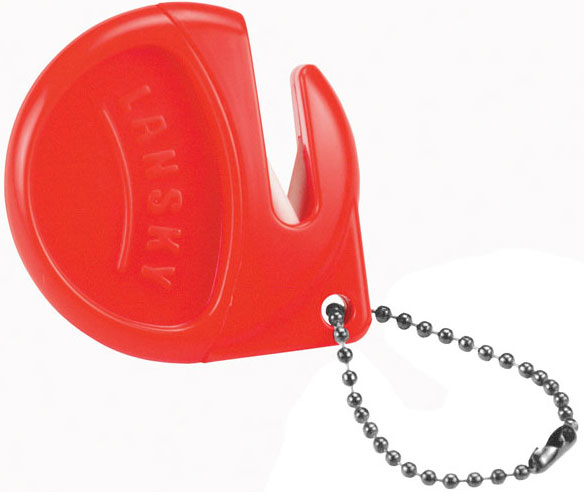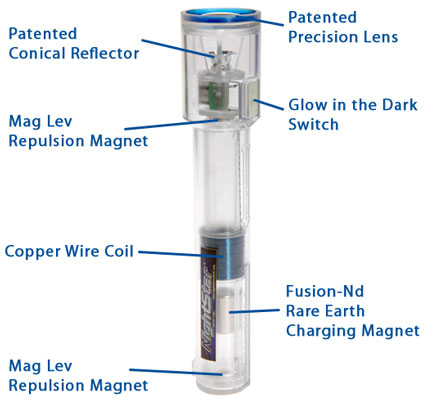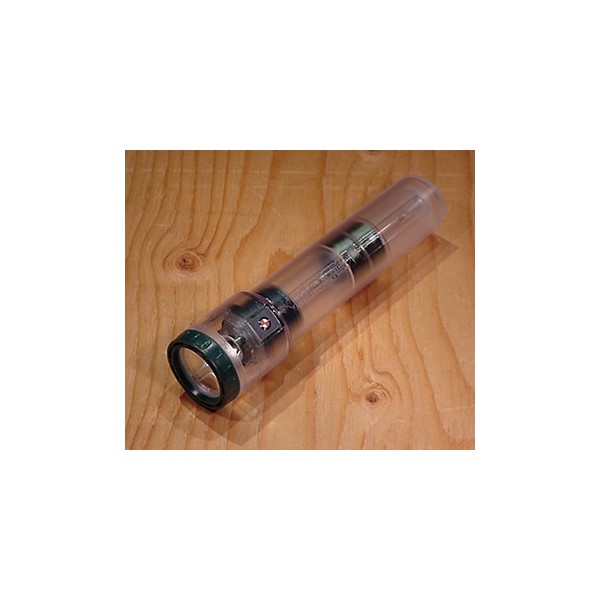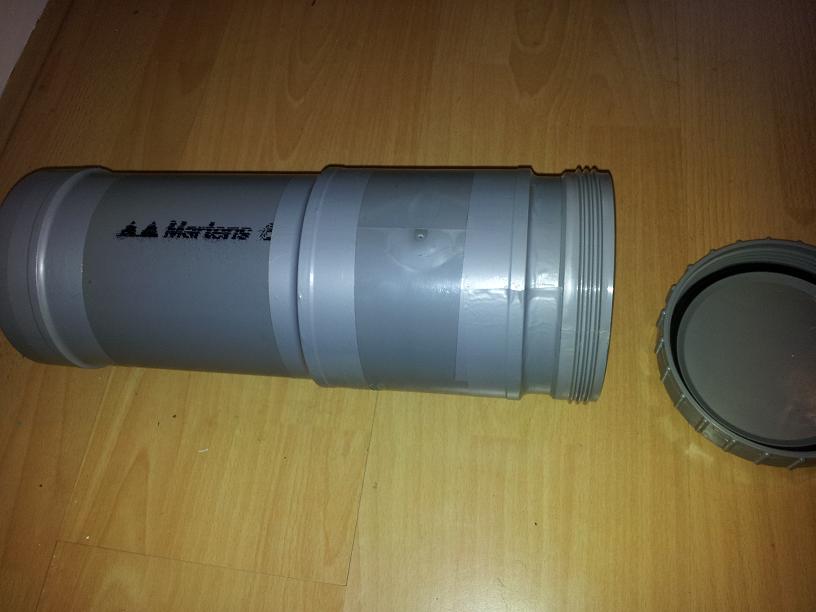-
Items
622 -
Registratiedatum
-
Laatst bezocht
-
Dagen gewonnen
1
Inhoudstype
Profielen
Forums
Kalender
Alles dat geplaatst werd door Advivo
-
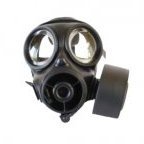
COLLOIDAAL ZILVER; zilver om te overleven
Advivo reageerde op Tom's topic in Gezondheid, medisch en verzorging
Het is overigens wel goed op z'n plaats, verwerkt in speciale militaire/hiking sokken. Tegen zweetvoeten... Maar dat is gewoon zilverdraad (niet colloidaal). Om het toch maar even een plaats te geven op een preppersforum -

COLLOIDAAL ZILVER; zilver om te overleven
Advivo reageerde op Tom's topic in Gezondheid, medisch en verzorging
Tja ... Ik ben niet zo van de complotten en aluhoedjes dergelijke , maar laten we svp oppassen met grenswetenschap- en kwakzalverij berichten op een serieus preppersforum. Ik las net ook al iets over een geheime doorbraak in kanker-geneeswijze, met perzikpitten (waarvan de farmaceutische industrie uiteraard niet wil dat u het weet) ... En straks krijgen we nog de zalfjes tegen kaalheid en gegarandeerd werkende geslachtsdeel-verlengende pillen ... Zilververgiftiging met bijbehorende verkleuring van de huid bestaat overigens (zoals eerder genoemd hier) wel degelijk : http://en.wikipedia.org/wiki/Argyria -
Pas toch op met dit soort 'kwakzalverij' berichten op een vrij serieus forum. Er zouden mensen kunnen zijn die het zowaar geloven ... Een stuk of 1000 perzik - of abrikoos-pitten en amandelen zijn voor de Prepper hooguit geschikt om de cyanide eruit te koken en destilleren, om t.b.v. de SHTF een effectieve zelfmoordpil te maken ... Maar die kant wil ik niet op.
-
Inderdaad ... Hele BOB ruikt naar 'vis' ...
- 933 antwoorden
-
- aanbieding
- aanbiedingen
- (en 9 meer)
-

COLLOIDAAL ZILVER; zilver om te overleven
Advivo reageerde op Tom's topic in Gezondheid, medisch en verzorging
-

Diabetes , "zelf Insuline vergaren"
Advivo reageerde op Advivo's topic in Gezondheid, medisch en verzorging
http://thesurvivalmom.com/2012/03/20/9297/ -
Bron : http://www.survivalistboards.com/showthread.php?t=33479 ( tevens : http://www.doomandbloom.net/2011/10/the-formula-for-making-insulin.html ) -------------------------------------------------------------------------------------------------------------------------------- One thing all diabetics face in a SHTF scenario is the eventual lack of meds or maybe the inability to get them, while some will be able to cope via herbal remedies, diet and exersize, some heavily insulin dependent diabetics will be looking as a very gruesome ride. I am a type 1 diabetic diagnosed at 26, mostly weight and inactivity related (was probably type 2 for a bit) I now rely on insulin (lantis) and (humalog) to maintain a good state of health. While exercise and diet have played a large role in reducing my needs, during sickness and stress sometimes uncontrollable things can happen to your blood sugar. As you can guess once I became more survival minded (5days in the ICU tends to do that) I saw a need to know that it was at least possible to manufacture on some scale insulin. Here is what I have found out so far : http://en.wikipedia.org/wiki/Eva_Saxl This is a link to an old story that I first heard on another forum about a person during world war 2 that manufactured and distrubted insulin using 1920's tech to keep alive a great deal of diabetics during the war. This was my first sign of hope should I ever or anyone ever need to attempt to make it themselves, they were after all in occupied China. Given the lack of quality of the blackmarket insulin at the time and price 1 gold ounce bar would get you a small supply, but one of her friends had died from this which inspired her husband and herself to learn how to make it. They managed to collect a book, "Beckman's Internal Medicine" described the methods that Dr. Frederick Banting and Charles Best first used to extract insulin from the pancreases of dogs, calves, and cows in 1921. From here you can guess that after great trouble they began to successfully produce useable insulin for humans that sustained what is rumored to be more than 2-3000 diabetics. ****** So it can be done, the part of all this that will be dangerous and hard is the testing of the strength of the insulin. Any diabetic can tell you what happens with to much insulin. ******* I found this information @ http://medtech.syrene.net/forum/showthread.php?t=3442 by using google ******* http://www.discoveryofinsulin.com/Experiments.htm At the end of July, Banting operated on one of the duct tied dogs and found that the ligature had held and that the pancreas had shrunk to about one-third of of its normal size. The gland was removed, chopped up and ground in a mortar with saline, strained and a small amount injected into a vein of a depancreatized or diabetic dog. This animal was observed very carefully and with anxiety, for there was great concern that it may have toxic effects as earlier experimenters had discovered. For a while there seemed to be no change, then later to dog showed improvement. The animal became a much more active and more important the blood sugar levels were significantly reduced demonstrating the soundness of Banting's theory. Although they were jubilant over the result of this experiment, there was some fear that it may have been as spurious result of no real significance. Consequently they injected the substance into other diabetic dogs with the same dramatic result and now felt confident that they had isolated the anti-diabetic factor from the islets of Langerhans in the pancreas. Banting's theory had been proven, but still diabetes had not been conquered even though the groundwork had been laid and there were still problems to overcome. On Dr. MacLeods return from Europe he was impressed, but insisted that the whole procedure be repeated to confirm this truly admirable result. The results, of course, with further experiments were confirmed. MacLeod was convinced and the announcement of discovery was presented in papers through the Physiological Journal Club in Toronto on November 14th , and the American Physiological Society shortly before the end of year in 1921. Many publications followed. [...] In the fall of 1922 the extract was still impure and they were experiencing considerable difficulty with deterioration, sensitization, reaction, etc., although Collip had prepared an extract which could be injected into humans and was a great improvement in the purification of the product. Collip also working with rabbits discovered the dangerous effects of too much insulin producing hypoglycemia and the basis for him believe biological assay of insulin. There were still, however, problems to be overcome come the main one of which production of the product in large enough quantities to be useful clinically. Consequently, the third stage of the development of insulin was being approached and methods were found to extract insulin from the adult beef pancreas, for the supply from the tilt calves was certainly much too small and with further work, without going into details which are contained in Stevenson's book on Sir Frederick Banting, it was possible to produce insulin from the adult beef pancreas. And from Frederick Banting's Nobel Lecture in 1925: http://www.discoveryofinsulin.com/FGBLecture.htm Best and Scott who are responsible for the preparation of Insulin in the Insulin Division of the Connaught Laboratories have tested all the available methods and have appropriated certain details from many of these, several new procedures have been found advantageous have been introduced by them. The yield of Insulin obtained by Best and Scott at the Connaught Laboratories, by a preliminary extraction with dilute sulphuric acid followed by alcohol is 1,800 to 2,220 units per kg. of pancreas. The present method of preparation is as follows. The beef or pork pancreas is finely minced in a larger grinder and the minced material is then treated with 5 c.c. of concentrated sulphuric acid, appropriately diluted, per pound of glands. The mixture is stirred for a period of three or four hours and 95% alcohol is added until the concentration of alcohol is 60% to 70%. Two extractions of the glands are made. The solid material is then partially removed by centrifuging the mixture and the solution is further clarified by filtering through paper. The filtrate is practically neutralized with NaOH. The clear filtrate is concentrated in vacuo to about 1/15 of its original volume. The concentrate is then heated to 50oC which results in the separation of lipoid and other materials, which are removed by filtration. Ammonium sulphate (37 grams. per 100 c.c.) is then added to the concentrate and a protein material containing all the Insulin floats to the top of the liquid. The precipitate is skimmed off and dissolved in hot acid alcohol. When the precipitate has completely dissolved, 10 volumes of warm alcohol are added. The solution is then neutralized with NaOH and cooled to room temperature, and kept in a refrigerator at 5oC for two days. At the end of this time the dark coloured supernatant alcohol is decanted off. The alcohol contains practically no potency. The precipitate is dried in vacuo to remove all trace of the alcohol. It is then dissolved in acid water, in which it is readily soluble. The solution is made alkaline with NaOH to PH 7.3 to 7.5. At this alkalinity a dark coloured precipitate settles out, and is immediately centrifuged off. This precipitate is washed once or twice with alkaline water of PH 9.0 and the washings are added to the main liquid. It is important that this process be carried out fairly quickly as Insulin is destroyed in alkaline solution. The acidity is adjusted to PH 5.0 and a white precipitate readily settles out. Tricresol is added to a concentration of 0.3% in order to assist in the isoelectric precipitation and to act as a preservative. After standing one week in the ice chest the supernatant liquid is decanted off and the resultant liquid is removed by centrifuging. The precipitate is then dissolved in a small quantity of acid water. A second isoelectric precipitation is carried out by adjusting the acidity to a PH of approximately 5.0. After standing over night the resultant precipitate is removed by centrifuging. The precipitate, which contains the active principle in a comparatively pure form, is dissolved in acid water and the hydrogen ion concentration adjusted to PH 2.5. The material is carefully tested to determine the potency and is then diluted to the desired strength of 10, 20, 40 or 80 units per c.c. Tricresol is added to secure a concentration of 0.1 percent. Sufficient sodium chloride is added to make the solution isotonic. The Insulin solution is passed through a Mandler filter. After passing through the filter the Insulin is retested carefully to determine its potency. There is practically no loss in berkefelding. The tested Insulin is poured into sterile glass vials with aseptic precautions and the sterility of the final product thoroughly tested by approved methods. The method of estimating the potency of Insulin solutions is based on the effect that Insulin produces upon the blood sugar of normal animals. Rabbits serve as the test animal. They are starved for twenty four hours before the administration of Insulin. Their weight should be approximately 2 kg. Insulin is distributed in strengths of 10, 20, 40 and 80 units per c.c. The unit is one third of the amount of material required to lower the blood sugar of a 2 kg. rabbit which has fasted twenty four hours from the normal level (0.118 percent) to 0.045 percent over a period of five hours. In a moderately severe case of diabetes one unit causes about 2.5 grammes of carbohydrate to be utilized. In earlier and milder cases, as a rule, one unit has a greater effect, accounting for three to five grammes of carbohydrate.
-

Leesvoer (+pdf link) : "One Second After" - William R. Forstchen
Advivo plaatste een topic in Survival Algemeen
Volgens vele preppers het meest doordachte en meest realistische boek over hoe een mogelijke SHTF zal verlopen. Bijzonder interessant is ook de zogenaamde "Die-Off Sequence" die hierin uiteengezet wordt (zie wiki voor uitleg) Wikipedia : One Second After Directe link (PDF) : http://xa.yimg.com/kq/groups/21916902/1931499887/name/William+R+Forstchen+-+One+Second+After.pdf -

Alleen in de wildernis (zoals Bear Grylls de bedrieger?)
Advivo reageerde op Tom's topic in Survival Algemeen
Het origineel is een vrij groot boek. Handiger is de pocket-versie : http://www.noodzaken.nl/survival-guide-handbook-engelstalig-pocket-edition-p-653.html Afmeting: 12 x 8,3 x 2,4 cm Gewicht: 230 gram Heb 'm ook al jaren. Ideaal voor in de BOB. -
Vermijd stilstaand water, zoals vijvers, sloten en regentonnen. Vooral in de warmere maanden (botulisme). http://nl.wikipedia.org/wiki/Botulisme Ga voor stromend water, het liefst zo dicht mogelijk bij de bron. Grondwater is het meest veilig (tenzij in een verontreinigde omgeving). Regenwater is in principe zuiver gedestilleerd water. Het verzamelt enkel wat onzuiverheden uit de lucht, onderweg naar beneden.
-

Lucht- & Water-dichte PVC 'Prep Buizen' ™ , om te begraven...
Advivo reageerde op Advivo's topic in Survival Algemeen
PVC is in principe wel tot flink grote doorsnedes te krijgen . Maar wordt ook snel een stuk duurder. De maat die ik gebruik is 12.5 cm. -
Normaal gebruik ik een zogenaamde 'Arkansas Stone' ( + 'honing-oil' ) voor alles , maar wellicht zoiets : ( pocket ceramic knife sharpener ) Bevat hetzelfde materiaal in een ' V " setup. (zie vergrootte weergave)
-

Lucht- & Water-dichte PVC 'Prep Buizen' ™ , om te begraven...
Advivo reageerde op Advivo's topic in Survival Algemeen
Enkel al het maken van de buizen , het nadenken over de te vervullen functie, en het vullen + uiteindelijke begraven , zijn al vermakelijke bezigheden op zich -
Het is een aanrader in elk geval. Ik had hem gevonden op eBay (nieuw) , gekocht voor rond de € 65 (incl. verzending uit de VS). Normaal zijn ze een heel stuk duurder.
-
Tijdje terug veel info over survival-messen gezocht en kwam steeds hetzelfde mes tegen in de positieve reviews. Deze is het dus geworden : de Kabar BK2 Campanion. http://odinsedge.blogspot.nl/2010/12/ka-bar-becker-bk2-campanion-survival.html
-

Lucht- & Water-dichte PVC 'Prep Buizen' ™ , om te begraven...
Advivo reageerde op Advivo's topic in Survival Algemeen
Bedankt voor de tip -

Apparatuur beschermen tegen een EMP, Hoe?
Advivo reageerde opeen topic in Survival uitrusting algemeen
Normaal gesproken zouden laptops emp proof moeten zijn, Het is namelijk een klasse 2 apparaat : dubbel geïsoleerd. Herkenbaar aan het symbool met 2 vierkantjes : Dat wil zeggen dat de volledige electronica binnenin is afgeschermd (Faraday kooi) met een metalen barrière ('shielding') in de behuizing. Maar voor je gemoedsrust kun je ook nog zoiets nemen : http://www.faradaybag.com/faraday-bag/14inch-laptop-faraday-bag-black-padded-hs7.html -

Dingen die anderen niet in hun BOB hebben zitten
Advivo reageerde op BTF's topic in Rugzakken en tassen
Als je weet waar te zoeken, zelfs deze dingen ben ik al tegengekomen : http://en.wikipedia.org/wiki/Syrette -

Lucht- & Water-dichte PVC 'Prep Buizen' ™ , om te begraven...
Advivo reageerde op Advivo's topic in Survival Algemeen
Ooh , op de gekste plaatsen Bosgebied, industrieterreinen, parken, zelfs een groot aantal gewoon langs de berm van een snelweg ... En ze zijn niet eens allemaal begraven hoor. Ik kies meestal een specifiek blijvend landschapskenmerk, zodat ik ze zelf makkelijk terugvind. Een eventuele toevallige ontdekking is (voor de meeste buizen) ook niet echt van belang : Er zit geen goud en diamanten in hè ... Maar de kans op toevallige ontdekking acht ik overigens ook vrij laag. Mocht er eentje weg zijn loop/rijd ik 15km verder naar de volgende. Er is rekening mee gehouden. Zit een redelijk doordacht systeem in verder. -
Tijdens mijn zoektocht naar de "eeuwig werkende zaklamp" ben ik ooit uitgekomen op een shakelight (schud-lamp) van het merk Nightstar. Een moderne variant van de 'knijpkat'. De meeste opwindbare zaklampen en 'knijpkatten' hebben een nadeel : Ooit gaan ze stuk... Ze werken met gloeilampjes, oplaadbare batterijen en bevatten een kwetsbaar mechaniek. Drie zaken die uiteindelijk ooit kapot zullen gaan. De shakelight werkt door middel van een zeer sterke (zwevende) magneet die in het handvat heen- en weer 'geschud' wordt. Het handvat is in het midden omgeven door een spoeltje (geen mechanische slijtage dus). Dit spoeltje laadt door het schudden een condensator op (dus géén batterij) welke via een schakelaar is aangesloten op een helder witte LED (energiezuinig en nagenoeg onverwoestbaar, ook qua branduren). Zelfs de aan-/uit schakelaar werkt magnetisch (een zogenaamde reed switch) en is dus ook al onverslijtbaar. Een minuutje schudden levert zo'n 20 minuten licht. En tijdens het gebruik kun je eenvoudig af en toe wat "bij-schudden". Verwacht geen wonderen, veel licht komt er begrijpelijkerwijs niet van af.. Maar voldoende om mee uit de voeten te kunnen in een SHTF scenario. Dit is naar mijn idee wat het meest in de buurt komt van een zaklamp die naar verwachting 'eeuwig' mee zal gaan. Tevens is de zaklamp volledig hermetisch gesloten (waterdicht dus). En blijft tevens drijven. Heb video's van de fabrikant gezien waar ze de lamp aan een ware martelgang blootstellen. Ze rijden er zelfs met een auto overheen. Kortom : onverwoestbaar. Zal eens kijken of ik die video terugvind en hier kan insluiten. Het is enkel oppassen met de magneet, deze zou namelijk dermate krachtig zijn dat hij een kompas (permanent) zou kunnen verstoren, op een afstand van 50 centimeter reeds ... Ik heb de mijne ooit in de VS gekocht voor ongeveer US$ 30. Maar ze zijn op internet ook te koop (hoewel redelijk schaars, naar het lijkt). *** Pas wel op met imitatie, want er schijnen op eBay chinese nep shakelights verkocht te worden. Deze bevatten geen magneet/spoel/condensator , maar een loos stuk ijzer en verborgen knoopcel-batterijtjes. Die doen dus verder helemaal niks (als de batterijtjes eenmaal leeg zijn) edit : Een review : http://the-gadgeteer.com/2005/05/13/shakelight_nightstar_led_flashlight_review/ Video :
-

Lucht- & Water-dichte PVC 'Prep Buizen' ™ , om te begraven...
Advivo plaatste een topic in Survival Algemeen
Al te veel zal ik er hier niet over zeggen, de reden dat ik dit plaats is enkel om er wellicht wat over te 'brainstormen' of om anderen op wat ideeën te brengen. In mijn geval heb ik de afgelopen tien jaar zo'n 20 stuks van deze buizen 'her-en-der' begraven. Elke buis bevat materiaal om 3 dagen in leven te blijven. Daarnaast zijn er enkele buizen met mijn hoofd-survival benodigdheden. De route loopt van mijn woonomgeving tot aan mijn BOL. Buizen zijn volledig verlijmd met PVC lijm en water/lucht-dicht. Ik heb verschillende varianten, waaronder de afgebeelde versie met schroefdop. En varianten met twee verlijmde eindkappen. Deze laatste zijn goedkoper en eenvoudiger te maken, aangezien er geen moffen/koppelstukken gebruikt hoeven te worden (enkel 1 buis en 2 eindkappen). Maar moeilijker te openen (stukgooien of zagen). -

Apparatuur beschermen tegen een EMP, Hoe?
Advivo reageerde opeen topic in Survival uitrusting algemeen
Dat is geheel correct ja , wat ik bedoel is dat gaas goedkoop/praktisch is om van grote ruimtes (compleet huis, of afzonderlijke kamers) een Faraday kooi te maken. Stalen beplating is dan wat duur en onpraktisch. -

Apparatuur beschermen tegen een EMP, Hoe?
Advivo reageerde opeen topic in Survival uitrusting algemeen
De test met de koffer die u beschrijft is assumptief ook onjuist. Een koffer/kist heeft 1 kier , waardoor dus ook direct een 'maas' onstaat ter grote van de kofferomtrek (!) ... Daarom : probeer simpel kippen/knaagdiergaas maar eens. Huidige GSM zit op 900 Mhz , dat ligt ruwweg in de 30cm band ( GSM 1800 = 17cm ). Dus mazen kleiner dan 30cm volstaan theoretisch reeds. Maar om zeker veilig te zijn, gaat men meestal uit van een kwart-golflengte (dus : 7,5 cm) EMP ligt -voor zover mij bekend- op een veel lagere frequentie (en kan daarom ook enorme afstanden afleggen). Maar dan volstaan dus ook grotere mazen. PS : U hebt het tegen een HTS'er hier Geen wikipedia-struiner. Het is m'n werk. -

Apparatuur beschermen tegen een EMP, Hoe?
Advivo reageerde opeen topic in Survival uitrusting algemeen
Het woord 'straling' in Electromagnetische Straling is ietwat verwarrend. Het is in principe wel degelijk gewoon electriciteit, maar in een inductieve vorm ( http://nl.wikipedia.org/wiki/Inductie_(elektriciteit) ), waardoor het zich door lucht kan verplaatsen. Dat wil zeggen dat het ook weer terug geïnduceerd wordt naar pure electriciteit wanneer het onderweg een 'spoel' tegenkomt (en een 'spoel' kan ook een willekeurige geleider zijn). ( leg maar eens een gloeilamp in een magnetron (kan veilig), deze gaat gewoon licht geven ). Ook leidt het tot warmtevorming, wat sommigen wellicht reeds kennen van inductief koken. Een Faraday kooi hoeft ook niet volledig dicht te zijn overigens. Dat is voor grote ruimtes bijna ondoenlijk, ook vanwege de kosten. Veelal volstaat simpel kippengaas reeds. Dit heeft simpelweg te maken met de golflengte van de 'straling'. Een auto heeft idd nèt te grote openingen/mazen (namelijk de ruiten), om voldoende bescherming te bieden. Maar kippengaas met mazen kleiner dan de golflengte (frequentie) van de EMP zal deze volledig tegenhouden. Fijnmazig kippengaas (of: knaagdiergaas) wordt ook het meeste gebruikt ter bescherming tegen EMP. Daar het spotgoedkoop is en en je er volledige muren of huizen mee kunt bekleden. Door lagen te overlappen kun je de mazen (=golflengte) bovendien nog kleiner maken. Maak voor de grap maar eens een kleine kubus van gaas en leg daarna je gsm of een transistorradio erin. Ontvangst zal meteen wegvallen.






